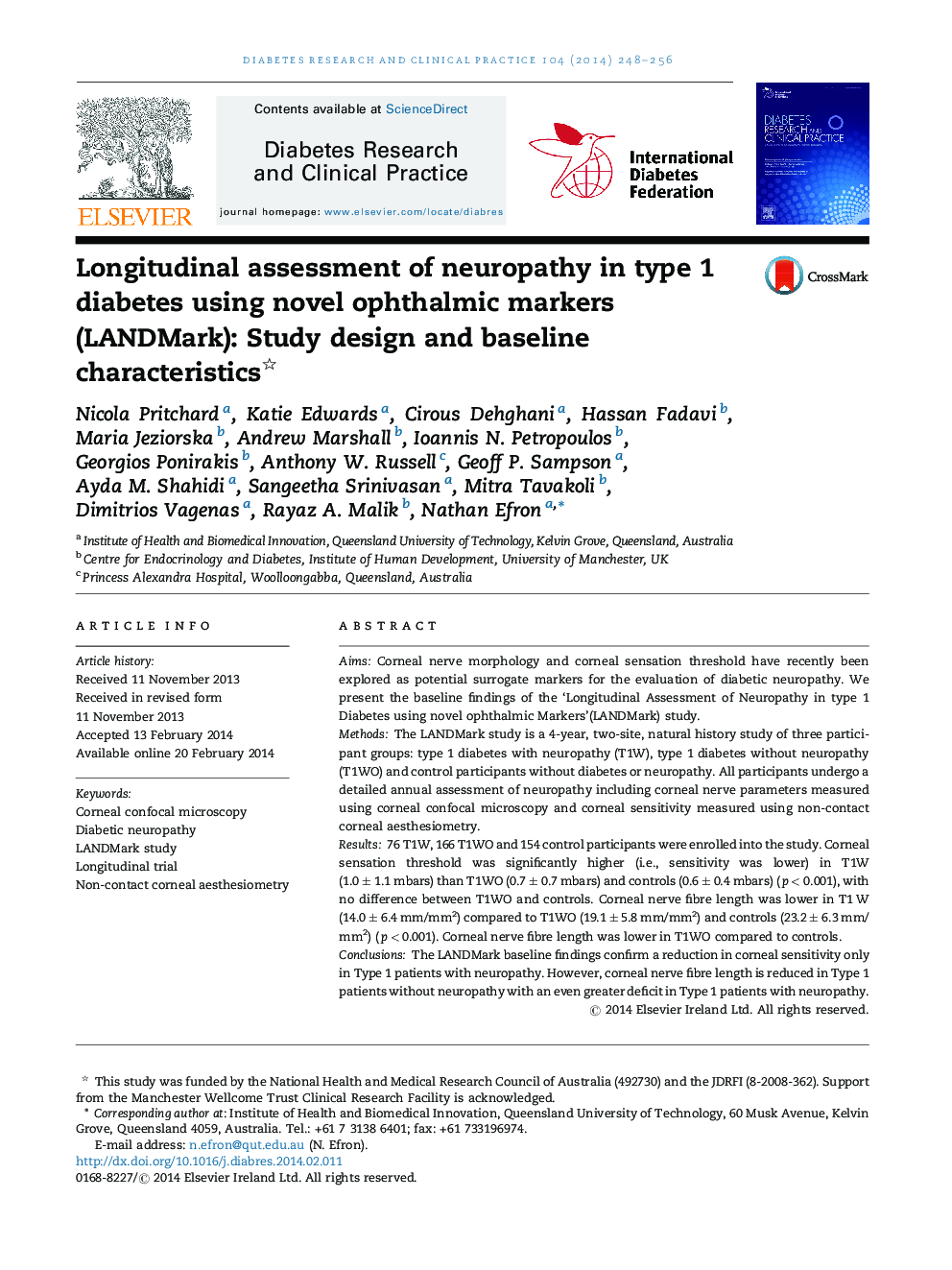| Article ID | Journal | Published Year | Pages | File Type |
|---|---|---|---|---|
| 5899635 | Diabetes Research and Clinical Practice | 2014 | 9 Pages |
AimsCorneal nerve morphology and corneal sensation threshold have recently been explored as potential surrogate markers for the evaluation of diabetic neuropathy. We present the baseline findings of the 'Longitudinal Assessment of Neuropathy in type 1 Diabetes using novel ophthalmic Markers'(LANDMark) study.MethodsThe LANDMark study is a 4-year, two-site, natural history study of three participant groups: type 1 diabetes with neuropathy (T1W), type 1 diabetes without neuropathy (T1WO) and control participants without diabetes or neuropathy. All participants undergo a detailed annual assessment of neuropathy including corneal nerve parameters measured using corneal confocal microscopy and corneal sensitivity measured using non-contact corneal aesthesiometry.Results76 T1W, 166 T1WO and 154 control participants were enrolled into the study. Corneal sensation threshold was significantly higher (i.e., sensitivity was lower) in T1W (1.0 ± 1.1 mbars) than T1WO (0.7 ± 0.7 mbars) and controls (0.6 ± 0.4 mbars) (p < 0.001), with no difference between T1WO and controls. Corneal nerve fibre length was lower in T1 W (14.0 ± 6.4 mm/mm2) compared to T1WO (19.1 ± 5.8 mm/mm2) and controls (23.2 ± 6.3 mm/mm2) (p < 0.001). Corneal nerve fibre length was lower in T1WO compared to controls.ConclusionsThe LANDMark baseline findings confirm a reduction in corneal sensitivity only in Type 1 patients with neuropathy. However, corneal nerve fibre length is reduced in Type 1 patients without neuropathy with an even greater deficit in Type 1 patients with neuropathy.
